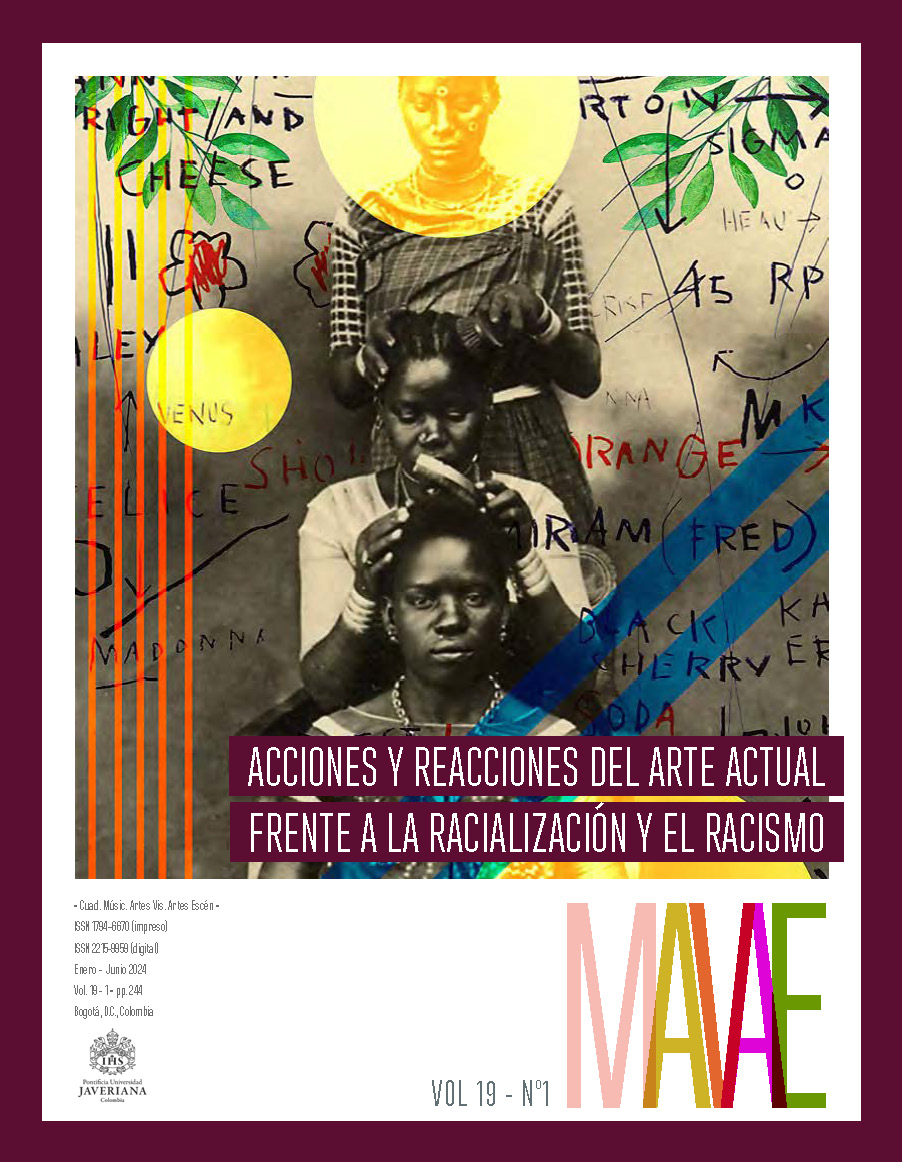Abstract
This article presents a reflection around the relationship between Liliana Angulo’s work and the critique of the colonial gaze as a shaping vector of subjectivity in Latin America. Angulo’s resource of making visible the link between domestic objects and her character “negrita” (“little black girl”) shows the intersection between gender and race in the cultural prejudices of Colombian society and the inherited colonial gaze with which the hierarchy of classification of bodies is established in this society. To explore this relation and its possible resistance, expressed through art, three analisis will be developed. First, the disposition of the afro-descendant female body in correlation with domestic objects which mark a hierarchy of gendered and racial domination finds an echo in the ways in which the colonial subject has been formed both in the circulation of mimicry and in the possibility of inverting the codes of the univocal order of coloniality and its effects on the gradient of gender and race. Second, in the way in which women in Angulo’s images perform their relations with objects articulate forms of expression and how it is possible to propose a heretical power of expression that confronts these codes. Finally, heresy and the heretic subject, expressed in the relationship between body and objects in Angulo’s work, can be projected as an aesthetic line of Colombian art.
Arango, G. (1958). Primer manifiesto nadaísta. Medellín: Gonzalo Arango.
Barriendos, Joaquín. 2011. “La colonialidad del ver: Hacia un nuevo diálogo visual interepistémico”. Nómadas 35 (2011): 13-29.
http://www.scielo.org.co/pdf/noma/n35/n35a02.pdf
Bhabha, Homi K. (2002). El lugar de la cultura. Buenos Aires: Manantial.
Boyer, Amalia. 2009. “Archipelia: Lugar de la relación entre (geo) estética y poética”. Nómadas 31 (2009): 13-25. http://www.
scielo.org.co/pdf/noma/n31/n31a2.pdf
Caro Lopera, Antonio José. 2014. Antonio Caro: Símbolo Nacional.Colección de arte contemporáneo. Bogotá: Seguros Bolívar.
Chaparro, Adolfo. 2020. Modernidades periféricas: Archivos para la historia conceptual de América Latina. Barcelona: Herder.
Escobar, Arturo. 2007. La invención del tercer mundo: Construcción y deconstrucción del desarrollo. Caracas: Fundación editorial
el perro y la rana. https://cronicon.net/paginas/Documentos/No.10.pdf
Fanon, Frantz. 2009. Piel negra, máscaras blancas. Madrid: Akal.
Giraldo Escobar, Sol Astrid. 2014. Retratos en blanco y afro: Liliana Angulo. Bogotá: Ministerio de Cultura.
Guisado Bermúdez, Jaidy Victoria. 2017. “Perspectivas de la producciónvisual en la representación de la mujer negra”. https://nodoarte.
com/2017/03/02/perspectivas-de-la-produccion-visual-en-larepresentacion-de-la-mujer-negra/
Richard, N. (2007). Fracturas de la memoria: Arte y pensamiento crítico. Buenos Aires: Siglo XXI. Universidad de los Andes. 2023. “Catálogo Razonado Beatriz González”. https://bga.uniandes.edu.co/
Valenzuela Klenner Galería. 2023. “Liliana Angulo”. https://docplayer.es/74666965-Liliana-angulo-valenzuela-klenner-galeria-carrera-
-26b-26-tel-bogota-colombia.html

This work is licensed under a Creative Commons Attribution 4.0 International License.
Copyright (c) 2023 Fabrizio Pineda Repizo


